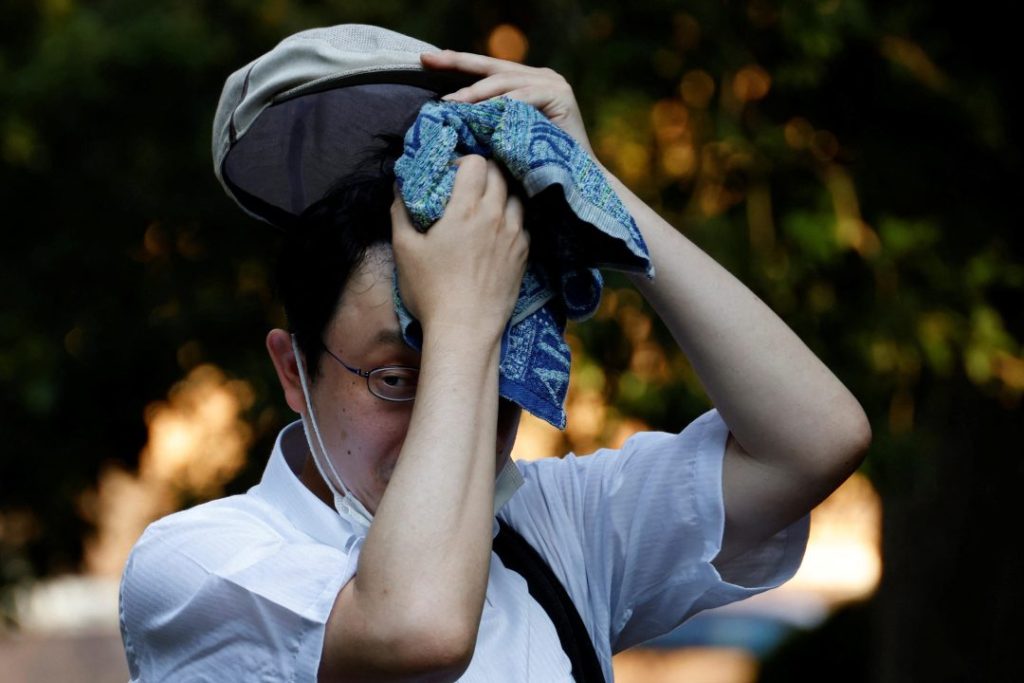20 Prefectures Have Been Issued Heatstroke Alerts
On Sunday, Japan alerted millions of citizens of heatstroke as record-breaking temperatures rose across large swathes while the torrential rains ravaged other areas.
National broadcaster NHK cautioned viewers that temperatures were at a level that could be life-threatening in some areas, with temperatures reaching almost forty degrees Celsius in certain areas, including Tokyo.

“Please stay hydrated, use air conditioners appropriately, and avoid outings that seem difficult,” the anchor advised.
Almost half of the prefectures have been alerted with heatstroke warnings. They are primarily located in the southeast and northeast, which affects tens of millions of people.
The effects of heat can be fatal, causing heatstroke. This causes damage to the kidneys, brain, and various organs. But it may also cause different conditions, like a breath-related problem or heart attack.
Kiryu is located in Gunma Prefecture, north of Tokyo, with recorded temperatures of up to 39.7 C. According to the Japan Meteorological Agency, Hachioji in the west of Tokyo was 38.9 C.
The highest temperature recorded in Japan has been 41.1 C, which was first reported by Kumagaya, Saitama Prefecture, in 2018, and was later matched with Hamamatsu, Shizuoka Prefecture, in the year 2020.
A few places saw the highest temperatures for over 40 years on Sunday. This included Hirono town, located in Fukushima Prefecture, with 37.3 C, and hot springs resort city Nasushiobara in the city of Nasushiobara with 35.4 C, according to the information provided by the weather agency.
In the meantime, rainstorms continued to batter the northern part of Japan with flooding, and at the very least, one landslide has been documented.
A man has been found dead inside a vehicle submerged within an Akita Prefecture in the country’s northwest, according to police AFP one week after similar conditions in southwest Japan killed seven.
Over the past weekend, a hefty rainstorm has poured massive amounts of rainfall in some regions of Japan and caused floods to rise and sodden earth to fall off into landslides.
Japan is currently experiencing its regular rainy season. It usually results in heavy downpours. It also often results in flooding or landslides and deaths. Scientists say climate change may increase the likelihood of heavy rainstorms in Japan and elsewhere due to the warmer climate holding more water.
Also read about Japan Will See Torrential Rain & Disasters This Year
